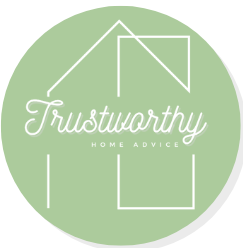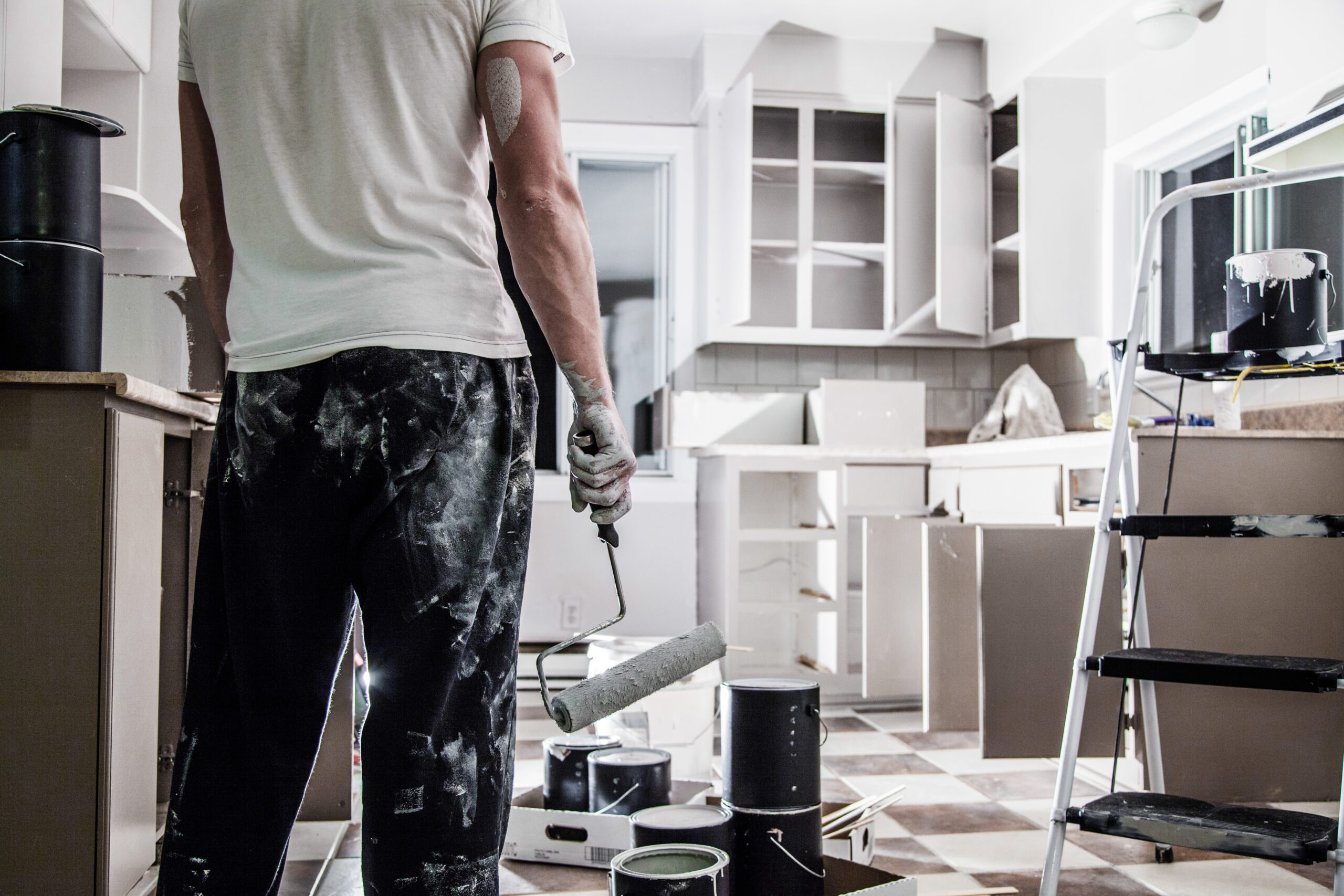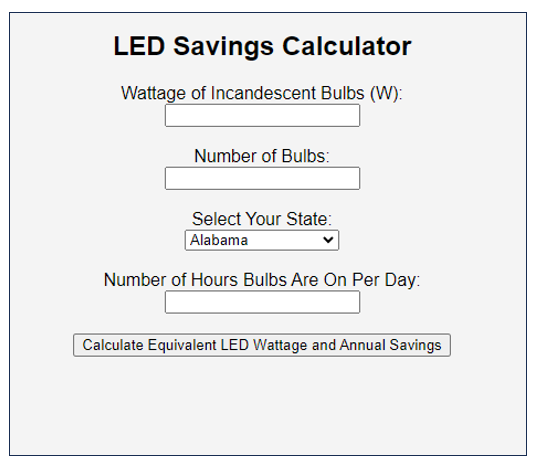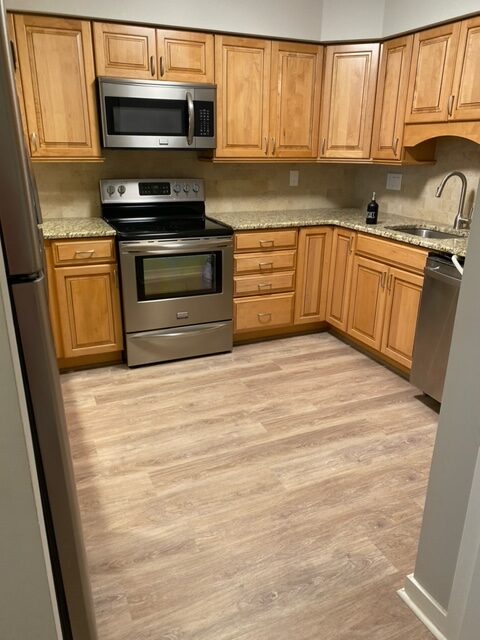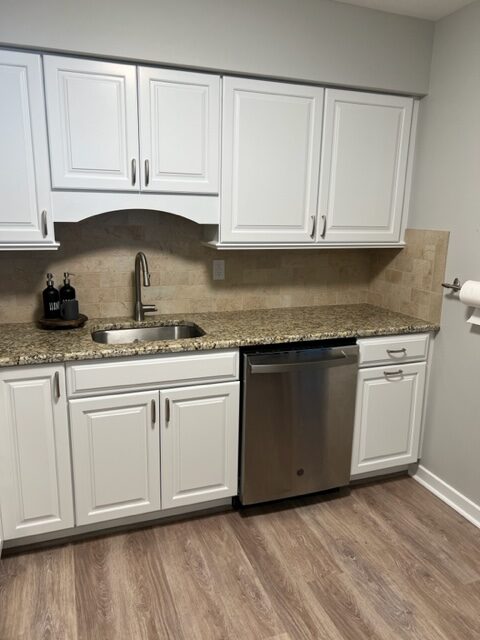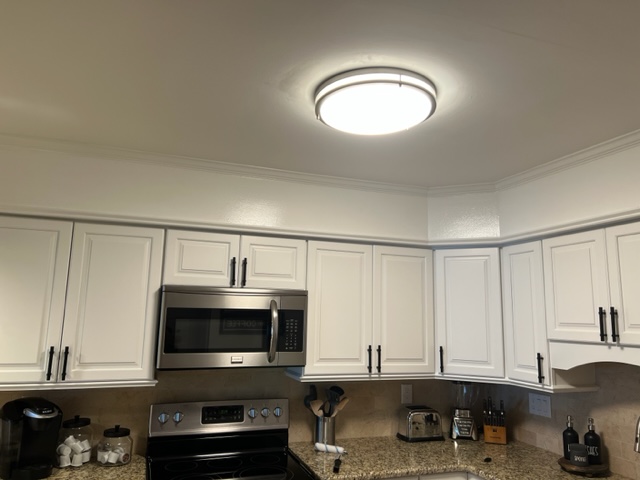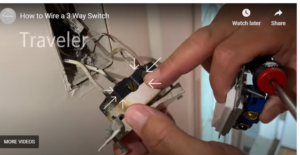Figuring our what home improvements add value to your home can be as exciting as it is daunting. The prospect of enhancing your living space while simultaneously boosting your property’s value is indeed a thrilling venture. However, knowing which improvements truly add value can be a puzzle.
Having owned 9 homes along with buying and selling a few investment properties, I thought a comprehensive list of what type of upgrades add value would be interesting to our readers. From kitchen remodels to energy-efficient upgrades, we will explore the myriad of options available to homeowners.
So, whether you’re planning to sell or simply looking to enhance your living environment, you’ve come to the right place. Let’s uncover the secrets of home improvements that not only add value but also elevate your quality of life.
10 Energy Efficiency and Sustainability Upgrades:
| Improvement | Estimated Cost | Avg ROI |
|---|---|---|
| Installing Solar Panels | $15,000 – $25,000 | 7-15 years to pay for itself |
| Upgrading to Energy-Efficient Windows | $300 – $1,000 per window | 70-80% |
| Adding High-Quality Insulation | $1,000 – $2,400 | Varies |
| Installing a Programmable Thermostat | $50 – $250 | Pays for itself within a year |
| Switching to LED Lighting | Under $10 per bulb | Immediate savings |
| Upgrading to Energy-Efficient Appliances | Varies | Varies |
| Installing a Tankless Water Heater | $1,000 – $3,000 | Varies |
| Adding a Smart Home System for Energy Management | Starting at a few hundred dollars | Varies |
| Implementing Rainwater Harvesting Systems | A few hundred to several thousand dollars | Varies |
| Installing Green Roofing or Living Roofs | Starting at $10 per square foot | Varies |
Installing Solar Panels
Solar panels reduce electricity bills and can generate income through excess energy production. Costs range from $15,000 to $25,000 before incentives, with an ROI often realized in 7-15 years. Installation typically requires professionals. However, there are some things you should know before moving forward.
Matt Ferrell does a great job at giving an overview of the benefits and issues with solar panels. One last thought, make sure you fully understand the costs before pulling the trigger.
Upgrading to Energy-Efficient Windows
These windows improve insulation and reduce heating/cooling costs. Costs range from $300 to $1,000 per window, with an ROI of 70-80%. Installation can be DIY for skilled individuals, but professional installation is recommended for maximum efficiency.
Adding High-Quality Insulation
Proper insulation can significantly reduce heating and cooling expenses, costing between $1,000 and $2,400 for an average home. The ROI is high, often recovering costs within a few years. Professional installation is recommended for optimal results. It’s also a good idea to upgrade your insulation periodically, check out our article on Insulation Upgrades for Home Energy Efficiency,
Installing a Programmable Thermostat
This upgrade can save up to 10% annually on heating and cooling, costing between $50 to $250. The ROI is excellent, often paying for itself within a year. This is a manageable DIY project for most homeowners. I wrote a complete review on the Best Smart Thermostats, click here for the article.
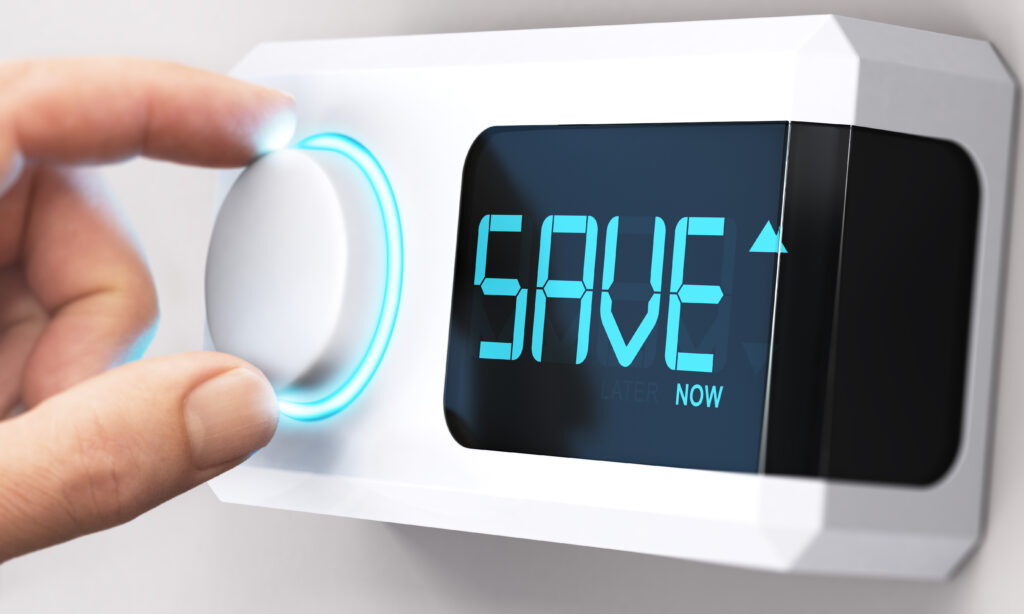
Switching to LED Lighting
Adopting LED lighting in your home is a highly beneficial upgrade, offering quantifiable advantages over traditional incandescent lights. LED bulbs are approximately 75-80% more energy-efficient, consuming significantly less power to produce the same amount of light. This efficiency translates into lower energy bills, contributing to substantial cost savings over time.
Use the calculator below to get an idea of how much savings you would realize in energy costs by switching incandescent bulbs to equivalent wattage LED bulbs. As energy costs can vary significantly across the US, so will the savings. I’ve included a drop down to select the state you live in. (The Calculator will open in a new tab)
One of the most notable benefits of LED lighting is its extended lifespan. While incandescent bulbs typically last around 1,000 hours, LED bulbs can last up to 25,000 hours or more. This longevity means fewer replacements, reducing maintenance costs and inconvenience. Additionally, LEDs emit very little heat compared to incandescent bulbs, which release most of their energy as heat. This feature not only makes LEDs safer to use but also helps in reducing cooling costs during warmer months.
Environmentally, LED bulbs are a superior choice. They contribute to lower greenhouse gas emissions due to reduced energy consumption and are free of harmful substances like mercury, making them safer for disposal. In terms of light quality, LEDs offer a wide range of color temperatures and provide instant, flicker-free illumination, enhancing the ambiance of your home.
Moreover, a home that extensively uses LED lighting can see an increase in its value and sellability. Energy-efficient features are increasingly sought after in the real estate market, and homes with LED lighting are often viewed as more modern and cost-effective. This aspect can be particularly appealing to environmentally conscious buyers and those looking to reduce their energy costs. In essence, incorporating LED lighting is not just a smart choice for immediate energy savings and environmental benefits; it also enhances the long-term appeal and marketability of your home.
Upgrading to Energy-Efficient Appliances
Investing in energy-efficient appliances is a smart move for homeowners looking to reduce their energy consumption and utility bills. Appliances that are ENERGY STAR rated are particularly desirable as they meet stringent energy efficiency guidelines set by the U.S. Environmental Protection Agency and the U.S. Department of Energy. These appliances use less energy and water compared to standard models, leading to significant savings over time.
The cost of upgrading to energy-efficient appliances varies depending on the type and model, but the return on investment (ROI) can be substantial. Not only do these appliances lower monthly utility bills, but they also contribute to a more sustainable and environmentally friendly home. Additionally, ENERGY STAR rated appliances often come with advanced features and improved performance, enhancing the overall user experience.
Moreover, when it comes time to sell your home, having energy-efficient, ENERGY STAR rated appliances can be a major selling point and will add value to your home. Prospective buyers are increasingly looking for homes that are not only comfortable and aesthetically pleasing but also energy-efficient and cost-effective to maintain. These appliances signal to buyers that the home is up-to-date and mindful of energy consumption, potentially making your property more attractive in the competitive real estate market.
Installing a Tankless Water Heater
Tankless water heaters provide hot water on demand, reducing energy costs. Installation ranges from $1,000 to $3,000. The ROI can be moderate, with utility bill savings. Professional installation is typically required. If you are interested in more detail, Check out my article on Whether Tankless Water Heaters are Worth it?
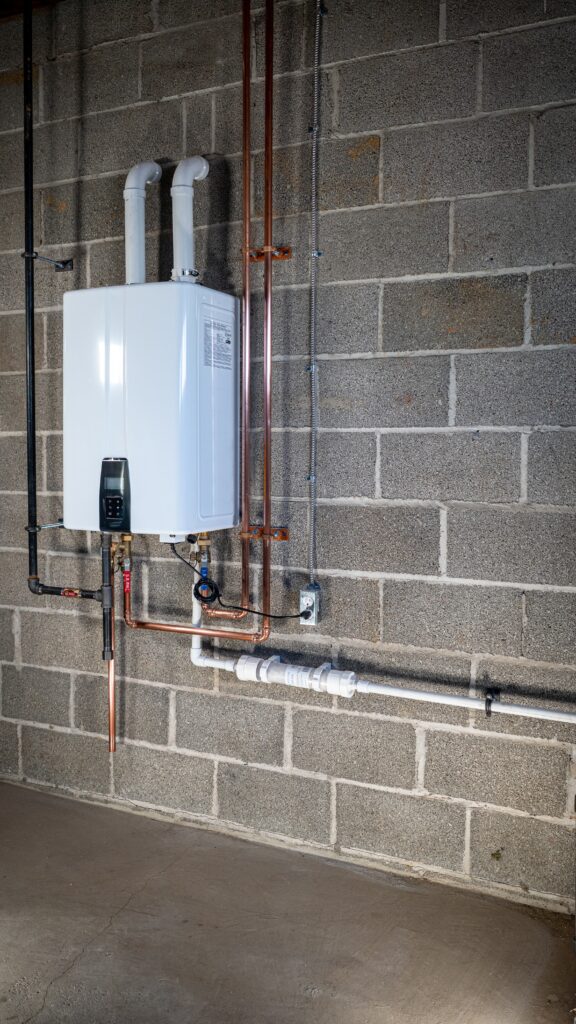
Adding a Smart Home System for Energy Management
Smart systems optimize energy use, starting at a few hundred dollars. ROI depends on usage but can be significant over time. Many smart home devices are DIY-friendly, though complex systems may need professional installation.
Implementing Rainwater Harvesting Systems
These systems can reduce reliance on municipal water, with costs ranging from a few hundred to several thousand dollars. ROI varies based on water usage and system size. DIY installation is possible, but professional help may be needed for larger systems.
Installing Green Roofing or Living Roofs
This is probably not something you would not consider unless you are an environmental activist, but I thought I’d include it for informational purposes. Green roofs improve insulation and reduce runoff, starting at $10 per square foot. ROI includes energy savings and extended roof life. This specialized installation requires professional expertise.
What is a green roof you may ask?
10 Kitchen and Bathroom Upgrades:
| Improvement | Estimated Cost | Avg ROI |
|---|---|---|
| Complete Kitchen Remodel | $12,000 – $33,000+ | 50-80% |
| Modernizing Bathroom Fixtures and Fittings | $5,000 – $25,000 | 60-70% |
| Adding New Countertops | $2,000 – $4,500 | 50-75% |
| Installing New Cabinetry or Refurbishing Existing Ones | $5,000 – $15,000 | 50-70% |
| Upgrading Kitchen and Bathroom Flooring | $1,500 – $4,500 | 70-80% |
| Adding an Island or Breakfast Bar to the Kitchen | $3,000 – $5,000 | Varies |
| Installing a Walk-In Shower or a Freestanding Tub | $3,000 – $10,000 | 60% |
| Adding a Double Vanity in the Bathroom | $1,000 – $3,000 | 70% |
| Implementing Under-Cabinet Lighting in the Kitchen | $200 – $500 | High |
| Installing Heated Floors in the Bathroom | $5 – $15 per sq ft | Moderate |
Complete Kitchen Remodel
I’ve mentioned in several posts that we are in complete renovation of my daughter’s townhome she just purchased. We purchased it in a condition that was livable, however, it was very dated and somewhat beat up. Several identical units that have been renovated have come up for sale in the same neighborhood with price tags $50L – $60K more than she paid. A kitchen remodel contributes significantly to increase home value, with costs ranging from $12,000 to $33,000 or more. The ROI can be as high as 50-80%. This project often requires professional contractors due to its complexity.
Modernizing Bathroom Fixtures and Fittings
Updating bathrooms can cost between $5,000 and $25,000, depending on the extent of the remodel. The ROI is typically around 60-70%. Professional installation is recommended for plumbing and electrical work.
Adding New Countertops
Granite or quartz countertops cost between $2,000 and $4,500 on average. They offer an ROI of about 50-75%. Installation is complex and generally requires a professional.
Butcher block countertops can be a relatively inexpensive option. We’re installing them in our latest renovation project. I also wrote a post on the Pros and Cons of Butcher Block Countertops for more detail.
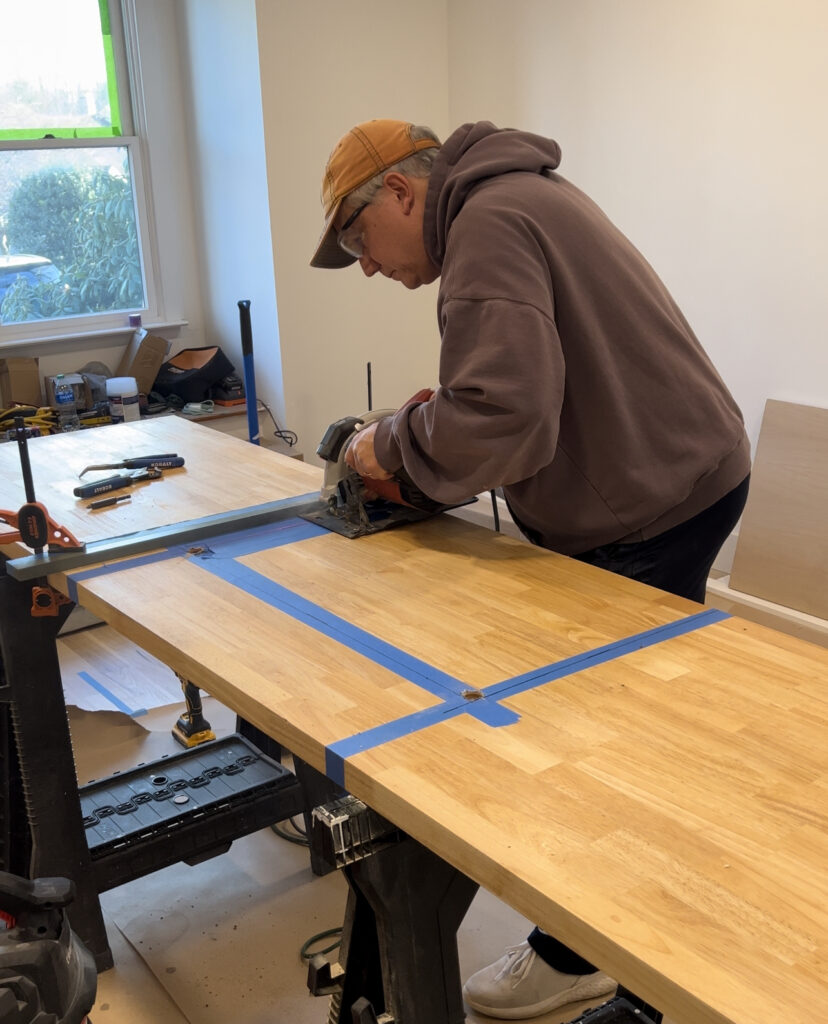
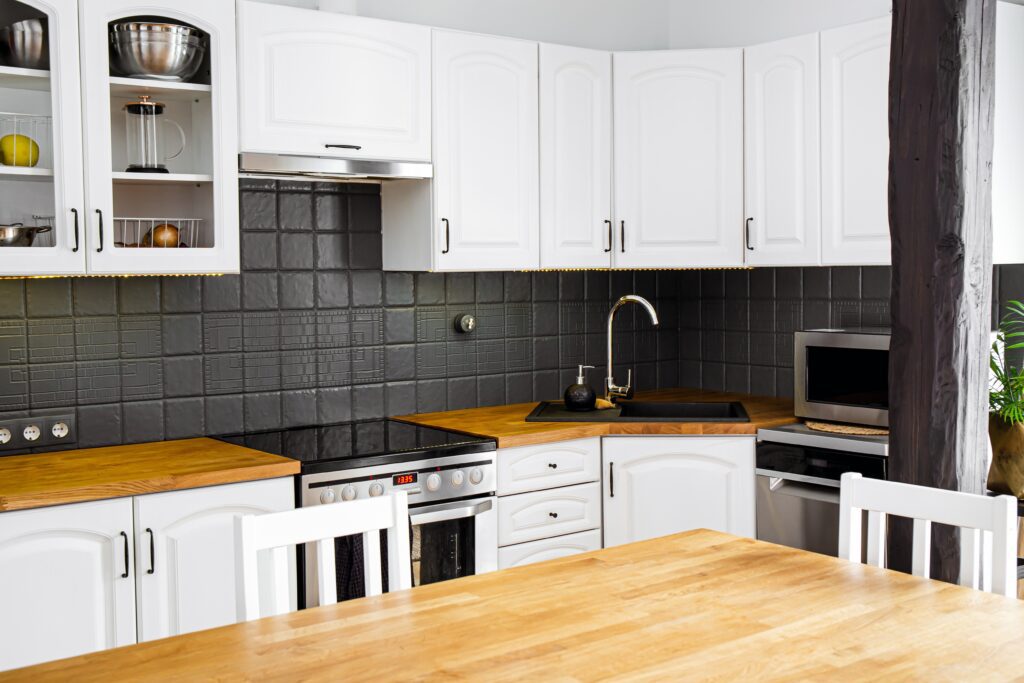
Installing New Cabinetry or Refurbishing Existing Ones
New cabinetry can cost between $5,000 and $15,000, with an ROI of 50-70%. Refurbishing existing cabinets is a more affordable option. Both can be DIY projects, but professional installation ensures quality. Painting cabinets can be a great option to give a space a new fresh look.
Here’s some pictures from our shore home where we a painted the cabinets and added some new hardware. Be sure to do this properly. I wrote a detailed post on How to Properly Paint Kitchen Cabinets. I encourage you to read this post and do some extensive research before attempting this project. It’s not difficult, but you need to know a few things before getting started.
Upgrading Kitchen and Bathroom Flooring
Costs range from $1,500 to $4,500, with an ROI of about 70-80%. While experienced DIYers can undertake this project, which is usually a tile job, professional installation is recommended for best results.
Adding an Island or Breakfast Bar to the Kitchen
This addition can cost between $3,000 and $5,000. The ROI varies but can significantly enhance kitchen functionality. Installation complexity varies, so professional help is often beneficial.
Installing a Walk-In Shower or a Freestanding Tub
Costs range from $3,000 to $10,000. The ROI for bathroom upgrades like these is around 60%. Professional installation is recommended due to plumbing complexities.
Adding a Double Vanity in the Bathroom
Double vanities cost between $1,000 and $3,000, offering an ROI of about 70%. This upgrade can be a DIY project but may require professional plumbing work.
Implementing Under-Cabinet Lighting in the Kitchen
This feature costs between $200 and $500, with a high ROI due to its low cost and high appeal. It’s a manageable DIY project for those with basic electrical skills.
Installing Heated Floors in the Bathroom
Heated floors can cost between $5 to $15 per square foot. The ROI is moderate but adds significant appeal and comfort. This project typically requires professional installation.
10 Exterior Improvements:
| Improvement | Estimated Cost | Avg ROI |
|---|---|---|
| Landscaping and Garden Makeover | $1,500 – $10,000+ | 75-100% |
| Adding a Deck, Patio, or Outdoor Kitchen | $4,000 – $20,000 | 80-120% |
| Installing a New Garage Door | $700 – $2,500 | Up to 95% |
| Painting the Exterior of the House | $1,500 – $4,000 | 55-75% |
| Adding or Upgrading a Fence | $1,500 – $4,000 | 50-70% |
| Installing Outdoor Lighting | $200 – $5,000 | Varies |
| Adding a Swimming Pool or Hot Tub | $3,000 – $30,000+ | Varies by location |
| Upgrading or Adding a New Roof | $5,000 – $10,000 | 60-70% |
| Adding a Front Porch or Sunroom | $5,000 – $30,000 | Varies |
| Installing New Siding or Stone Veneer | $5,000 – $15,000 | 75-80% |
Landscaping and Garden Makeover
Professional landscaping can range from $1,500 to $10,000 or more. The ROI is about 75-100%, making it one of the best investments for home value. This can be a DIY project, but professional design and execution often yield better results.
Adding a Deck, Patio, or Outdoor Kitchen
Costs for decks and patios range from $4,000 to $20,000, with an ROI of around 80-120%. Outdoor kitchens can cost more. These projects are typically complex and benefit from professional installation.
Of course you do as we did and go extreme. We opted to have a custom deck with a full outdoor kitchen, roof with heaters inside, drop down screens, fireplace and a 2-tap kegerator. The cost was rather high, around $160K, but when we do decide to sell, this will be a significant selling feature. Here’s a few pictures during construction, then the final finished deck. It an amazing space where we spend a lot of time. The outdoor kitchen is fantastic for get togethers, and we’ve become wood fired pizza masters 😉
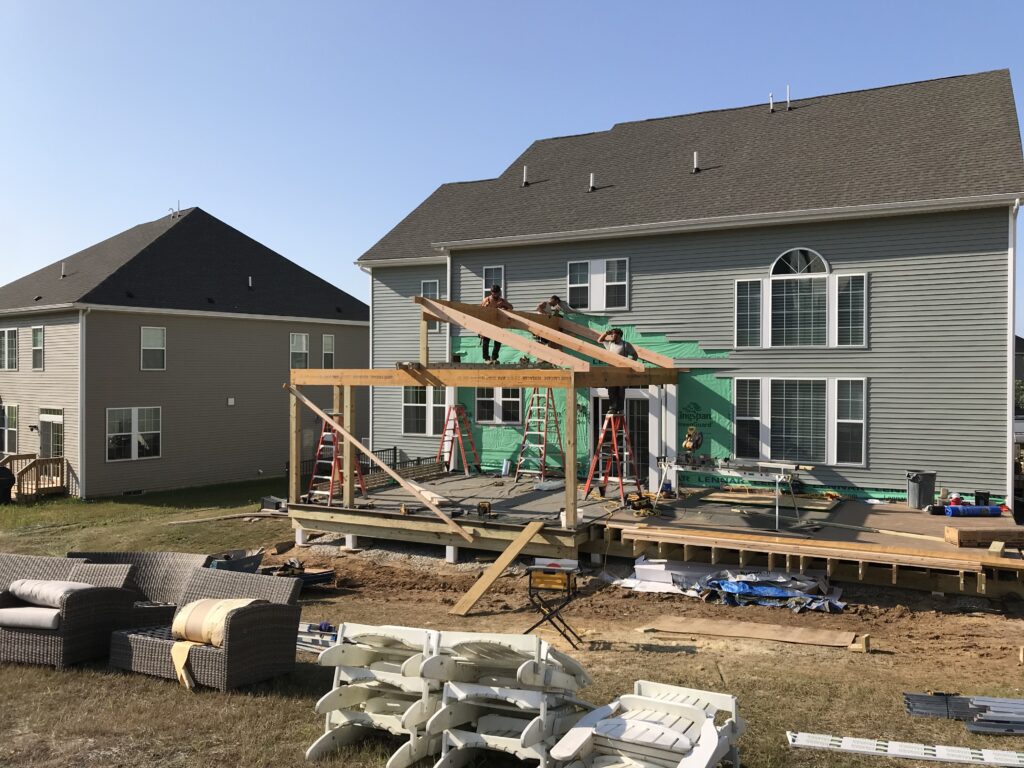
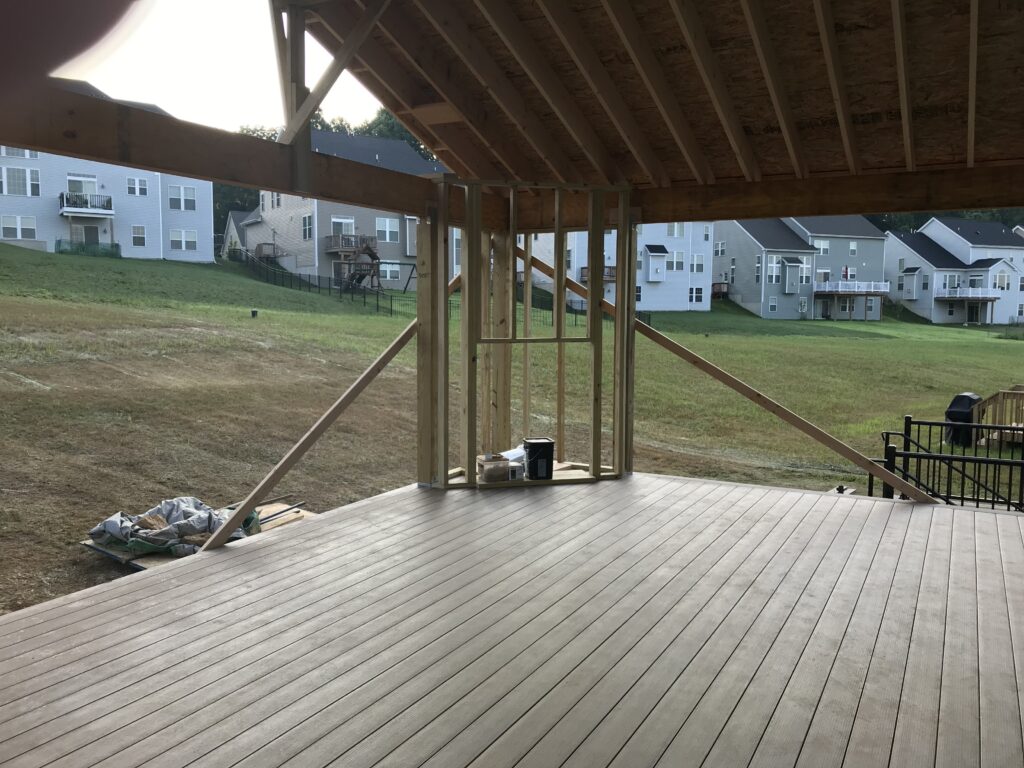
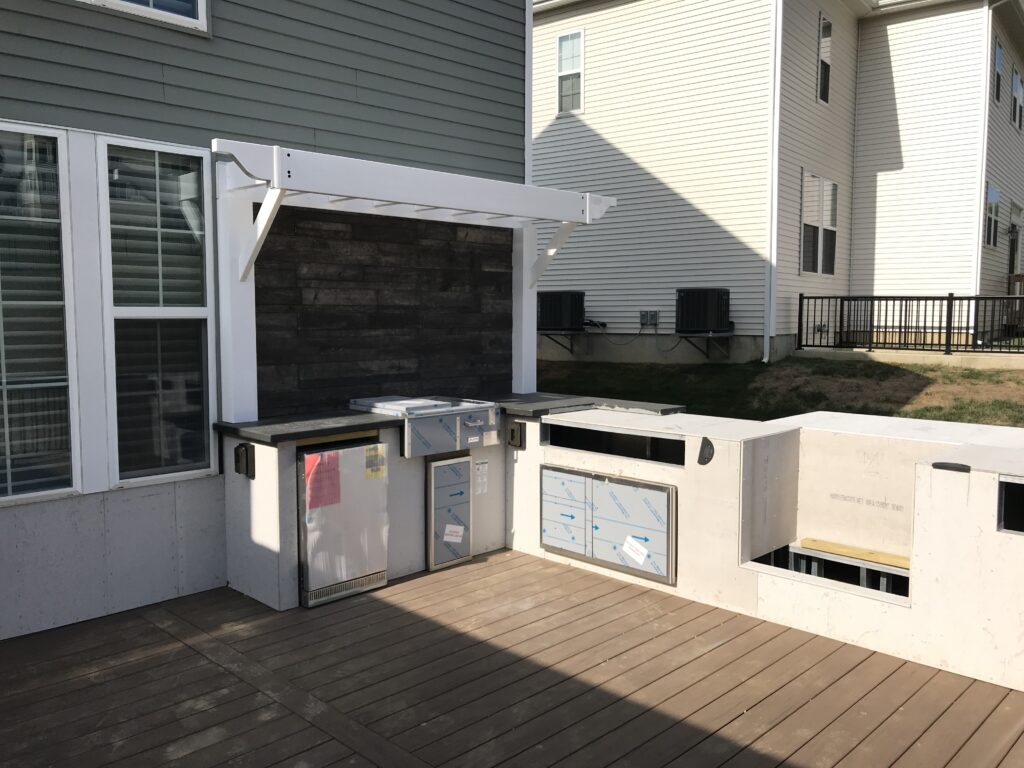
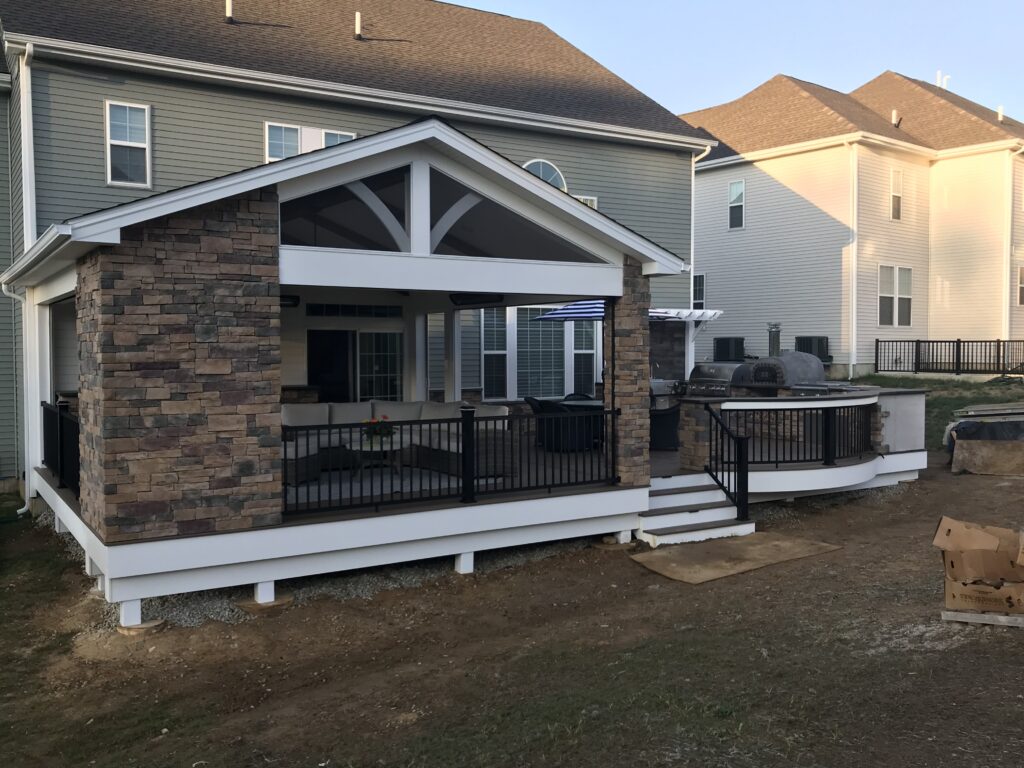
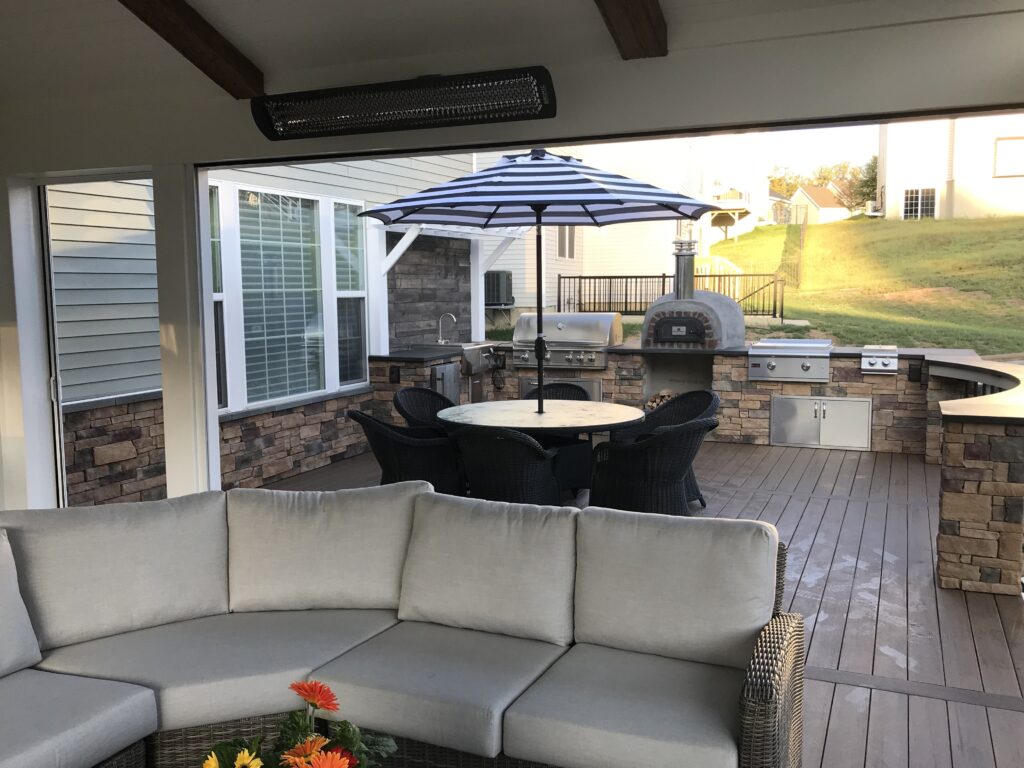
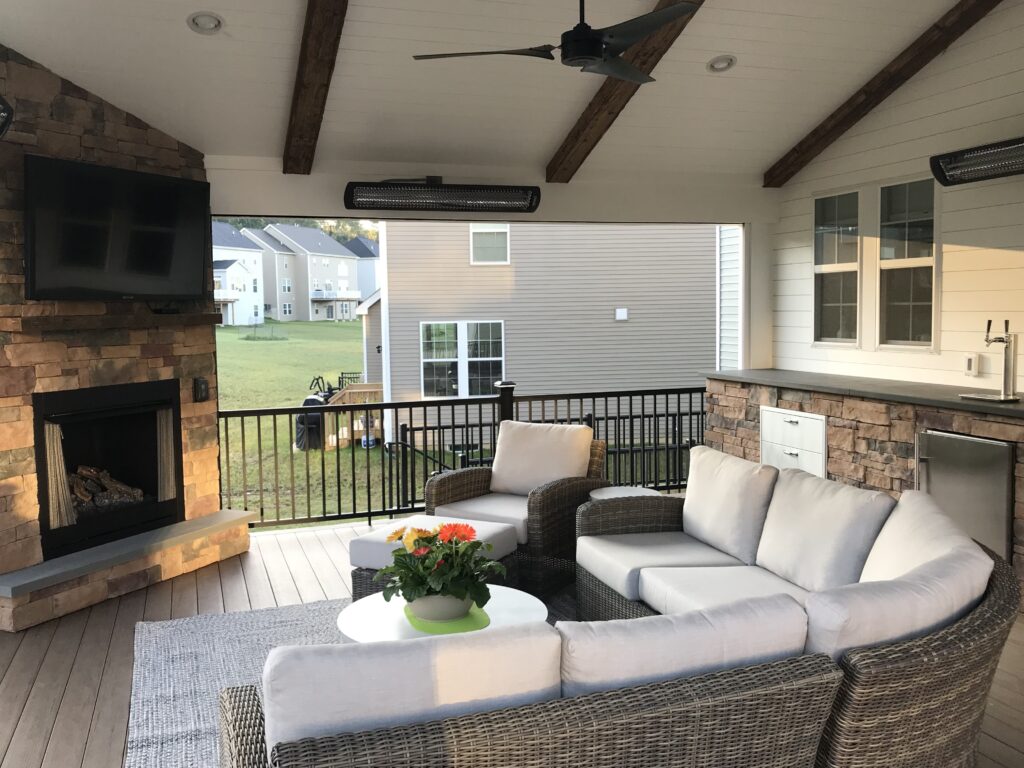
Installing a New Garage Door
A new garage door costs between $700 and $2,500, offering an ROI of up to 95%. This can be a DIY project, but due to the technical aspects of installation, professional help is often preferred.
Painting the Exterior of the House
Exterior painting can cost between $1,500 and $4,000, with an ROI of 55-75%. While it can be a DIY project, professional painting ensures a quality finish and durability.
Adding or Upgrading a Fence
The cost ranges from $1,500 to $4,000, with an ROI of about 50-70%. This can be a DIY project, but larger fence installations might require professional help.
Installing Outdoor Lighting
Costs range from $200 to $5,000, depending on the project’s scale. The ROI can be significant in terms of curb appeal. Basic installations are DIY-friendly, but more complex systems should be professionally installed.
Adding a Swimming Pool or Hot Tub
Swimming pools can cost $30,000 or more, while hot tubs range from $3,000 to $10,000. ROI varies greatly by location. These installations are complex and require professionals. However, be aware that a pool can actually be a negative during re-sale if this is not what a potential buyer wants. The may love the home, but not want to deal with the maintenance and on going costs of a a pool.
If you are thinking about adding a pool, these days I’d seriously consider a saltwater pool. I’ve owned a pool most of my adult live and also grew up with one as a kid. If your not familiar with Saltwater pools, I wrote a detailed article comparing Saltwater Pools vs Chloring Pools describing the pros and cons of each.
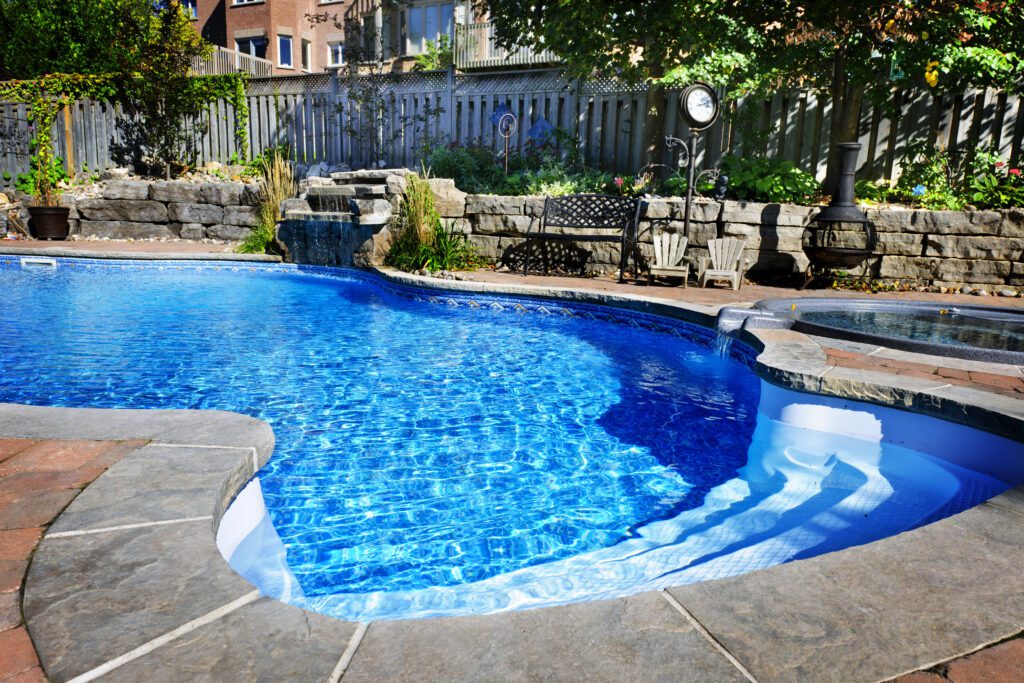
Upgrading or Adding a New Roof
A new roof can cost between $5,000 and $10,000, with an ROI of around 60-70%. Roofing is a specialized job that requires professional installation.
Adding a Front Porch or Sunroom
The cost ranges from $5,000 to $30,000, with varying ROI depending on the build and location. These additions are complex and typically require professional construction.
Installing New Siding or Stone Veneer
New siding costs between $5,000 and $15,000, while stone veneer can be more. The ROI for siding is around 75-80%. Both projects are best suited for professionals due to the technical skills required.
10 Interior Enhancements:
| Improvement | Estimated Cost | Avg ROI |
|---|---|---|
| Refinishing or Installing Hardwood Floors | $3 – $12 per sq ft | 70-80% |
| Painting Interior Walls with Modern, Neutral Colors | $1 – $3 per sq ft | 60-70% |
| Adding or Upgrading a Fireplace | $2,000 – $5,000 | 50-60% |
| Installing Crown Molding or Wainscoting | $5 – $8 per linear ft | Varies |
| Upgrading the Home’s Lighting Fixtures | Varies | High |
| Adding Built-In Shelves or Storage Solutions | $2,000 – $5,000 | Moderate |
| Converting an Attic or Basement into Livable Space | $10,000 – $30,000 | 70-75% |
| Creating an Open Floor Plan | $1,200 – $5,000 | 60-70% |
| Soundproofing Rooms | $1,000 – $2,500 | Subjective |
| Installing Smart Home Devices | Varies | Varies |
Refinishing or Installing Hardwood Floors
Costs range from $3 to $8 per square foot for refinishing and $6 to $12 for new installation. ROI can be around 70-80%. While DIY is possible, professional installation ensures longevity and quality.
Painting Interior Walls with Modern, Neutral Colors
Interior painting costs between $1 to $3 per square foot, with an ROI of 60-70%. This is a popular DIY project, but hiring professionals can achieve a more polished look.
Adding or Upgrading a Fireplace
Installing a new fireplace can cost between $2,000 and $5,000, with an ROI of about 50-60%. This is typically a job for professionals due to safety and building code considerations.
Installing Crown Molding or Wainscoting
The cost ranges from $5 to $8 per linear foot. ROI varies but adds significant aesthetic appeal. Installation can be DIY for those with carpentry skills, but professional installation ensures precision.



Upgrading the Home’s Lighting Fixtures
Costs vary widely based on fixture choice, but ROI is high due to the significant impact on a home’s ambiance. Many lighting projects are suitable for DIY, but some may require an electrician.
Adding Built-In Shelves or Storage Solutions
Custom shelving can cost between $2,000 and $5,000. ROI is moderate but adds functionality and appeal. Skilled DIYers can undertake this project, though professionals ensure a seamless look.
Converting an Attic or Basement into Livable Space
Conversion costs range from $10,000 to $30,000, with an ROI of about 70-75%. These projects are complex and typically require professional contractors.
Creating an Open Floor Plan
Removing walls can cost between $1,200 and $5,000, with an ROI of 60-70%. Structural changes should be handled by professionals to ensure safety and compliance with building codes.
Soundproofing Rooms
Soundproofing costs between $1,000 and $2,500 for a standard room. ROI is subjective but adds to quality of life. This can be a DIY project, but professional installation offers better sound isolation.
Installing Smart Home Devices
Costs and ROI vary based on the devices chosen. Many smart home installations are DIY-friendly, though complex systems may require professional setup.
10 Functional Additions:
| Improvement | Estimated Cost | Avg ROI |
|---|---|---|
| Adding a Home Office or Study Room | $2,000 – $10,000 | 65% |
| Building an Additional Bedroom or Guest Room | $10,000 – $30,000 | 50-60% |
| Installing a Home Security System | $200 – $2,000 | High |
| Adding or Expanding a Laundry Room | $1,000 – $5,000 | 50-70% |
| Implementing a Home Automation System | Starting at a few hundred dollars | Varies |
| Upgrading the HVAC System | $5,000 – $10,000 | 35-50% |
| Adding a Mudroom or Utility Space | $2,000 – $7,000 | Moderate |
| Upgrade Basement Waterproofing | $2,000 – $7,000 | Moderate |
| Adding a Wine Cellar or Wine Fridge | $500 – $10,000+ | Varies |
| Installing a Backup Generator | $2,000 – $10,000 | 50-60% |
Adding a Home Office or Study Room
Creating a dedicated office space can cost between $2,000 and $10,000, with an ROI of about 65%. This can be a DIY project, but professional help may be needed for extensive renovations.
Building an Additional Bedroom or Guest Room
Adding an additional bedroom or guest room to your home is a significant renovation project that can greatly enhance the functionality and value of your property. This improvement is particularly beneficial for growing families or homeowners who frequently host guests. It not only provides extra living space but also increases the overall marketability and appeal of your home.
The estimated cost of adding a bedroom or guest room can vary widely, typically ranging from $10,000 to $30,000 or more, depending on factors such as the size of the addition, the materials used, and regional labor costs. This cost may include expenses for framing, insulation, drywall, flooring, painting, and possibly adding new windows or doors.
The average return on investment (ROI) for adding a bedroom is around 50-60%. While this may not cover the entire cost of the addition, the increased functionality and appeal to potential buyers can make it a worthwhile investment. Additionally, a well-designed and strategically placed addition can enhance the overall flow and aesthetic of your home.
When planning an additional bedroom or guest room, it’s important to consider local building codes and obtain the necessary permits. Working with a professional contractor or architect can ensure that the addition is structurally sound, aesthetically pleasing, and compliant with all regulations.
Installing a Home Security System
Installing a home security system is a valuable upgrade that enhances the safety and security of your property. In today’s world, where safety concerns are paramount, a robust security system not only protects your home and family but also provides peace of mind.
The cost of installing a home security system can vary greatly, ranging from basic systems starting around $200 to more advanced systems costing up to $2,000 or more. The price depends on the complexity of the system, the number of sensors and cameras, and whether it includes professional monitoring services. Basic DIY kits are more affordable and can be installed by the homeowner, while comprehensive systems with professional installation and monitoring services tend to be more expensive.
The return on investment (ROI) for a home security system is high in terms of security and peace of mind, though it may not directly translate into a monetary return. However, having a security system can make your property more attractive to potential buyers, especially those who prioritize safety. It can also potentially reduce homeowners’ insurance premiums, as many insurance companies offer discounts for homes with security systems.
Adding or Expanding a Laundry Room
Costs range from $1,000 to $5,000, with an ROI of about 50-70%. This project can be DIY but may require professionals for plumbing and electrical work.
Implementing a Home Automation System
Costs vary based on system complexity, starting at a few hundred dollars. ROI depends on the functionality added. Many aspects of home automation are suitable for DIY, but professional installation is recommended for integrated systems.
Upgrading the HVAC System
An HVAC upgrade can cost between $5,000 and $10,000, with an ROI of about 35-50%. This is a job for licensed professionals due to the technical and safety aspects involved.
Adding a Mudroom or Utility Space
Creating a mudroom can cost between $2,000 and $7,000, with a moderate ROI. This project can be a DIY endeavor, but complex designs might require professional help.
Upgrade Basement Waterproofing
Upgrading your basement waterproofing system is one of the most important upgrades you can make if you have any moisture in your basement. While this will add value to your home, it’s a potential health issue as well if left untreated. On average waterproofing upgrades will cost between $2K and $7K with a moderate financial ROI.
Adding a Wine Cellar or Wine Fridge
Costs range from $500 for a wine fridge to $10,000+ for a cellar. ROI varies but can be a luxury selling point. Wine fridges are a simple addition, while cellars typically require professional construction.
Installing a Backup Generator
One of the best additions we made to our home in PA. During the Covid days, we had a 4 day outage during the summer, it wasn’t fun at all. So, we opted to add a whole house, standby generator.
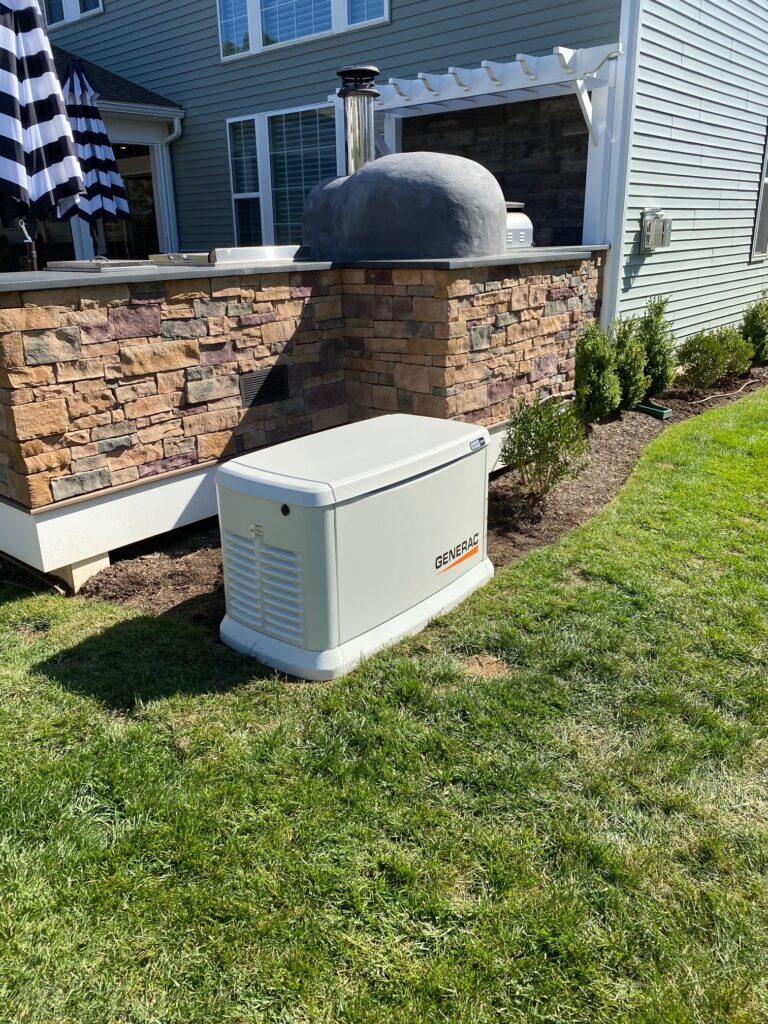
It may have sat for a few years without significant use, however, we just experienced a power outage from a large east coast storm that lasted over 24 hours. We were completely un effected by the outage, 26 seconds after the power went out, we were back on line with no negative effects. Generators cost between $2,000 and $10,000, with an ROI of about 50-60%. This is a safety feature and should be installed by professionals. If you want more detail, I did a review on the Best Whole House Generators.
